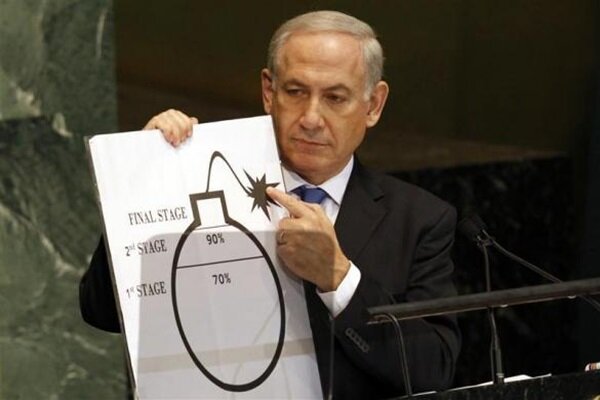Major changes in the military doctrine of the Zionist regime after the “Al-Aqsa storm”

reported by Mehr News Agency quoted by Al Jazeera, since the establishment of the fake Zionist regime based on the United Nations Resolution 181 on November 29, 1947, which dealt with the partition of Palestine, several military principles emerged in the conflicts between the Arabs and this regime, which military educational institutions They investigated them in the Arab world and beyond.
These principles were based on the plans and wars that the Zionist regime carried out in its aggression against the Arab countries from 1948 until the “Al-Aqsa storm” on October 7, 2023, including the June 1967 war. What this regime calls the “Six-Day War”, the October 1973 war, as well as successive wars against Lebanon in 1978, 1982, 1996, and 2006, in addition to sudden attacks against Iraq, Tunisia, Sudan, and Syria.
However, today these principles have changed under the influence of the “Al-Aqsa storm”, an event that forced the Zionist regime to face battles with unusual characteristics and military doctrine that has been in place since
span style=”text-align:justify”>its establishment was accompanied, it changed. Some of these changes are:
1- War in the enemy’s land
Zionist regime From the beginning of its establishment, it has always tried to fight its wars in the land of its enemies, relying on the pride of power and the desire to show regional superiority. Fighting in other people’s land was considered a vital part of the strategic security of the Zionist regime, because this small regime cannot afford long-term battles in the occupied lands. Transferring the war to the enemy’s land gave the Zionists a sense of security and helped encourage Jewish immigration.
However, the “Al-Aqsa storm” dragged the battle into the occupied territories, where the Arab side was fighting in the heart of the Zionist regime, this broke the logic of military superiority and showed that the real security of the Arabs It is possible only with a just peace that returns the lands to the original owners.
Of course, the transfer of the battle to the enemy’s land had also happened in the past through the response of the Palestinian resistance to the Zionist regime’s attacks by firing rockets into the occupied territories, but this time the intensity of the attacks was due to the prolonged The battle resulted in continuous strikes on cities such as Tel Aviv, Jaffa, Haifa, Beer Al-Saba and Safad . With Lebanon’s Hezbollah and Yemen’s Ansarullah movement joining the battle, the range of resistance attacks to areas such as Al-Jalil, Tiberias, Golan Heights and Um al-Rashrash (Eilat) also expanded.
2- Long-term war experience
Zionist Army He was not used to long battles. Its longest war was the invasion of Lebanon in 1982, which lasted for several months. Even the Nakbat War of 1948, which lasted from May 1948 to March 1949, did not last more than eleven months.
In the 1956 war, the battle lasted only ten days. But the “Al-Aqsa storm” has forced this regime into a daily and long battle, which threatens a long-term erosion, something that the Zionist regime’s army had not experienced until now, and it puts pressure on the country’s military and human resources.
3- War on several fronts
since In 1967, the Zionist regime did not have a battle on several fronts, and more than half a century has passed since its last encounter on different fronts. But today, the occupying army is engaged in a massive war on several fronts. In addition to the open front in the Gaza Strip, another front has been formed on the borders of Lebanon, and the operations of the Yemeni Ansarullah group are also carried out from within the territory of Yemen, while conflicts have also flared up in Syria.
On October 26, 2024, the Zionist regime struck Iran in response to Iran’s attacks, after being targeted by this country. These attacks were carried out due to the Zionist regime’s frequent encroachments on Iran’s interests in Syria and the targeting of groups allied with Tehran in several areas.
The opening of several fronts against the Zionist regime is an unprecedented development that puts the regime’s army under severe pressure and demands huge resources from it.
This situation weakens the traditional military power of this regime, even despite the continuous support of the United States and the West and the Zionist regime’s efforts to present itself as the only regional power.
4- Urban wars
He was not used to urban or guerilla conflicts. Since the Zionist groups fought urban battles in Palestinian cities during the establishment of the regime, the need for this style of warfare has decreased.
Although the Zionist forces clashed with the Palestinians in several West Bank cities and special units carried out assassination operations against Palestinian activists, the extensive and long war of “Al-Aqsa Storm” in the streets of Gaza caused heavy casualties. It has been for the Zionist forces; Because the regular army of the Zionist regime is not used to this type of war in urban and narrow areas, which are easier for land owners to defend. This issue has put the Zionist military in direct confrontation with the resistance.
5- Ignoring one’s casualties
Zionist regime Before, even if a soldier was killed or injured, he would react widely, and sometimes he would launch massive attacks to quickly respond to the invading forces. But today, there are changes in the doctrine of the Zionist army, so that hundreds of Zionist soldiers are killed and thousands of people are injured, without this regime showing the usual reactions.
In the past, the Zionist regime sometimes sent African or Sephardic Jewish soldiers to the front line, which some consider this act as a form of They knew racism. But today, we see that the elite units are in the front line without any discrimination. The army of this regime has somehow coped with more casualties and continues to repeat tactical mistakes that put the soldiers in danger; Such as standing near the opening of tunnels or taking shelter in buildings that may have been bombed.
6- Lack of importance for prisoners
From the day At the beginning of the Gaza war, the Zionist regime announced that its goal, in addition to destroying Hamas, was to free its prisoners from this movement. However, this goal seems to have faded in the midst of intense fighting.
Earlier, the Zionist regime would launch a large-scale military operation to free even one or two captives, but now, with dozens of captives (101 captives) in the hands of Hamas, there is no serious attempt to free them. They cannot be seen.
The talks that were going on with the mediation of Qatar and Egypt to stop the war and release the hostages have been stopped due to the stubbornness of the Zionist regime and the increase in its demands.
Among the measures that led to the escalation of the conflict, the assassination of Ismail Hanieh, the head of the political office of Hamas, in Tehran in July 31, 2024 and then Yahya Senwar on October 17, 2024.
What has been mentioned shows a fundamental change in the doctrine of the Zionist army, a change that is caused by the regional conditions and the desire of the Zionist regime to show its power of tolerance against regional enemies and allies. Even if this is at the cost of increasing human casualties, in order to continue to present itself as the guardian of the interests of America and the West in the region.


